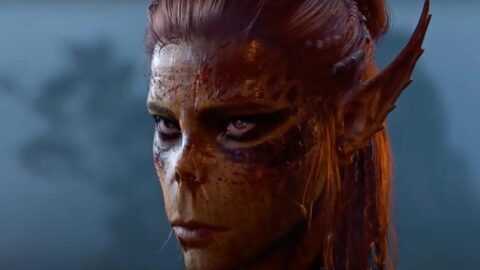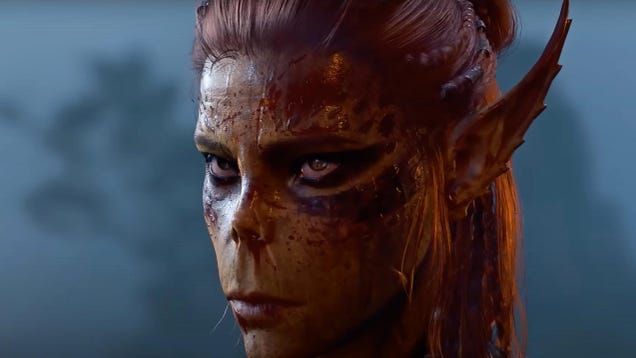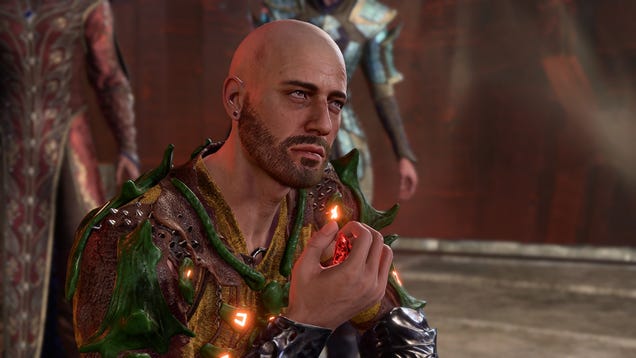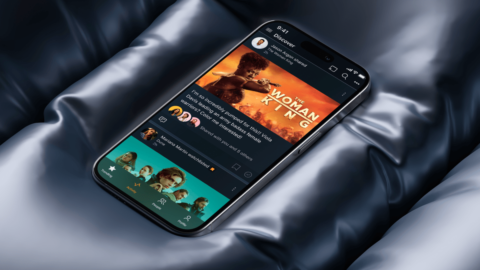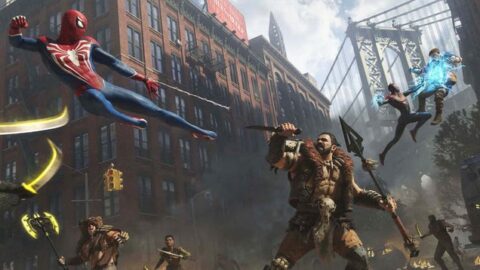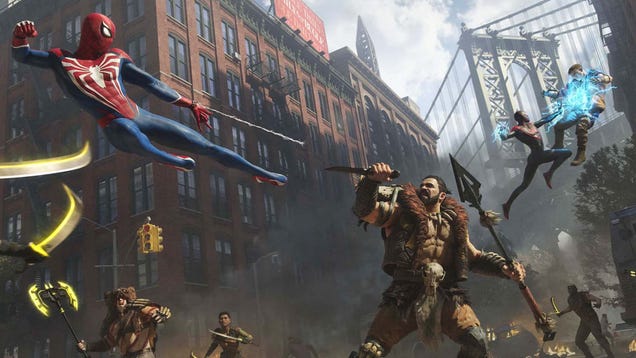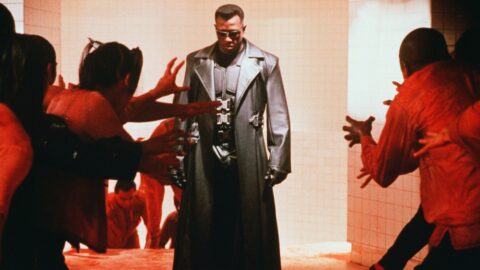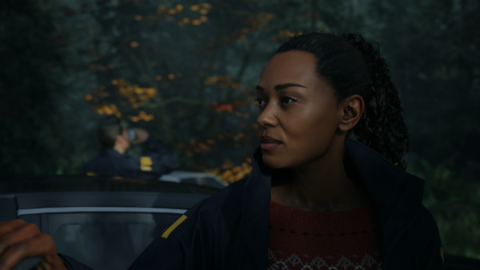Fantastic fights, stupendous stunts, calamitous chases, and climactic spectacle so bonkers it’ll blow your mind — it’s the 15 best action movies on Max (formerly known as HBO).

Want to shake off the doldrums of a long day with something bone-rattlingly exciting? You need an action movie stuffed with fantastic fights, stupendous stunts, calamitous chases, and climactic spectacle so bonkers it’ll blow your mind.
Whether your interests lean to science fiction, fantasy, cop drama, disaster flicks, superheroes, heist thrillers, mythic monsters, family-friendly adventure, or R-rated violence, we’ve got you covered with a top-notch collection of awesome movies.
Here are the 15 best action movies on Max.
1. The Lord of the Rings: The Fellowship of the Ring
Credit: Moviestore / Shutterstock
J.R.R. Tolkien’s high-fantasy novel is brought to vivid life by Peter Jackson’s Lord of the Rings Trilogy, which began in 2001 with this widely acclaimed first chapter. In the mystical realm of Middle-earth, a humble Hobbit known as Frodo Baggins (Elijah Wood) takes on an epic quest to destroy a mighty token sought by a powerful sorcerer. Hunted by dark forces, Frodo finds strength in the fellowship that surrounds him. Noble elves, brooding warriors, churlish dwarves, wise wizards, and hungry Hobbits join in the battle to save their world in a celebrated film series that had audiences and critics in awe. Best yet, you can make a DIY movie marathon by adding The Two Towers and The Return of the King to your watch list. — Kristy Puchko, Film Editor
How to watch: The Lord of the Rings: The Fellowship of the Ring is streaming on Max.
2. The Matrix
Can you see the world inside the code?
Credit: Warner Bros / Village Roadshow Pictures / Kobal / Shutterstock
It’s the 1999 action movie that changed the game. Keanu Reeves stars as Neo, a hacker who tumbles down a digital rabbit hole to discover the world he knows is a simulation. Joining forces with a band of rebels (that includes Laurence Fishburne and Carrie-Anne Moss), he seeks to topple the robot tyrants that have enslaved humanity. This quest leads to eye-popping fights, breath-snatching escapes, and mind-bending reveals. Writing and directing duo Lana and Lilly Wachowski blew critics and audiences away with their incredible vision. Their disturbing sci-fi dystopia is snugly wrapped in a captivating cyberpunk aesthetic that’s as cool as Reeves is in a long black trench coat. On top of all this, the Wachowskis presented a ground-breaking visual effect dubbed bullet time, which slowed action down but gave a bevy of angles to make every hit land harder. You can keep the thrills going by completing the trilogy: The Matrix Reloaded and The Matrix Revolutions are also available on Max. — K.P.
How to watch: The Matrix is streaming on Max.
3. Birds of Prey
Credit: Warner Bros / Moviestore / Shutterstock
Max has a whole hub dedicated to DC adaptations, meaning you can enjoy everything from Justice League and Constantine to a slew of Batman movies and animated offerings. Subscribers are spoiled for choice. But our pick for the movie most jam-packed with bonkers action is 2020’s Birds of Prey (and the Fantabulous Emancipation of One Harley Quinn). The Suicide Squad sidekick finally gets her solo outing, and director Cathy Yan dreamed up an incredible three-ring circus of action scenes, ranging from bone-snapping bar brawls to glitter-bombed prison breaks, a maniacal musical number, a car chase on roller skates, and a team-up showdown that is explosively awesome. Margot Robbie stars alongside Mary Elizabeth Winstead, Rosie Perez, Jurnee Smollett-Bell, and Ella Jay Basco in an R-rated superhero movie that’s audaciously violent, unapologetically sexy, and as wildly fun as a Harley movie demands. (For bonus thrills, check out the TV-MA cartoon series Harley Quinn.) — K.P.
How to watch: Birds of Prey is streaming on Max.
4. Upgrade
Two years before Saw writer and actor Leigh Whannell made a name for himself as a director with his outstanding and celebrated freshening-up of The Invisible Man, he delivered a little cult actioner that not nearly enough people noticed at the time called Upgrade. A cybernetic spin on RoboCop, Upgrade stars Alien: Covenant‘s Logan Marshall-Green playing an auto mechanic named Grey who, after being paralyzed by a gang of thugs who also kill his wife right in front of him, accepts a hush-hush invite to test drive some future tech in the form of a computer chip implanted in his brain that will fix his motor functions.
Obsessed with catching and punishing his wife’s murderers, Grey makes an easy mark for a computer chip that inevitably begins revealing its sentience. Gifting him with the super-human ability to kick unholy amounts of ass in hand-to-hand combat, it turns out the tech has its own nefarious motives. Disgracefully ignored at the box office, Upgrade is sleek and hyper-violent and pretty much perfect. — Jason Adams, Entertainment Reporter
How to watch: Upgrade is now streaming on Max.
5. Spy
Credit: Larry D Horricks / 20th Century Fox / Kobal / Shutterstock
Schwarzenegger. Stallone. Van Damme. And, uhh, Melissa McCarthy? Believe it or not, the Bridesmaids actress and Go scene-stealer made the case for herself as a terrific action star, albeit of the comic variety, with Paul Feig’s stellar spy spoof from 2015. A goof on the James Bond movies, Spy is as twisty and thrilling as anything Daniel Craig blue-steeled his way through, just with way more cat sweatshirts — which is to say everybody wins.
As Susan Cooper, a CIA agent on permanent desk duty who gets pulled into the action precisely because she doesn’t look like anyone anybody would think of as a spy, McCarthy revels in her fish-out-of-water fights with an evil Russian arms dealer and his crew, especially his daughter Rayna (a wildly funny Rose Byrne). The jokes stick as hard as the stabbings, and there are enough double and triple and quadruple-crosses to keep everybody guessing in between the rat-a-tat punchlines. And extra bonus points for Feig and co. letting Jason Statham flex his funny bone alongside his biceps. — J.A.
How to watch: Spy is now streaming on Max.
6. From Dusk Till Dawn
Although it’s practically impossible now to not know that this is a vampire movie, when Robert Rodriguez’s From Dusk Till Dawn landed in 1996, nobody saw the second-act swerve into full-on horror territory ahead. Instead, this seemed like just another Pulp Fiction riff about wise-cracking criminals getting in over their heads, co-starring Tarantino himself no less. Tarantino, who co-wrote the screenplay with Rodriguez, brilliantly used that misdirection to the movie’s advantage, so it was truly a WTF moment when Salma Hayek’s character morphed mid-strip into a bloodsucker in stilettos.
Watching the movie now, it’s just a bloody good time, with a barnstormer of an ensemble cast that includes Harvey Keitel (playing the straight man!), Juliette Lewis, Cheech Marin, Danny Trejo, Fred Williamson, genre icon Tom Savini, John Hawkes, and of course George Clooney at his Caesar cut-sporting, sleaziest best. Ludicrous fun. — J.A.
How to watch: From Dusk Till Dawn is now streaming on Max.
7. Immortals
Credit: Universal / Kobal / Shutterstock
Shoved aside as yet another rip-off of Zack Snyder’s 2006 blockbuster 300, Tarsem Singh’s Immortals has nevertheless in the 12 years since its release become my preferred destination for visually spectacular and mythologically inclined hyper-stylized action of the homoerotic kind. Starring Henry Cavill as mortal warrior Theseus, Immortals is a remix of myths similar to what Baz Luhrmann would do to musicals with Moulin Rouge.
With stunning costumes from Oscar-winning costume designer Eiko Ishioka lighting up Singh’s typically outrageous visuals, we watch as the deities (including Luke Evans as Zeus) reluctantly team up with the mortals to battle the scheming King Hyperion (Mickey Rourke). It’s one spectacular spectacle sent down from Mount Olympus itself. — J.A.
How to watch: Immortals is now streaming on Max.
8. The Terminator
Who could have thought that a techno slasher starring a monosyllabic bodybuilder from the co-director of Piranha II: The Spawning would go on to become one of the most iconic sci-fi films ever? But that’s just what happened when director James Cameron hallucinated a terrifying robot skeleton during a literal fever dream, setting him off to plot out the relatively simple story of a cyborg (Arnold Schwarzenegger) that travels back in time in order to kill a woman named Sarah Connor (Linda Hamilton) before she can give birth to the leader of the robot resistance.
While the story has grown more convoluted with each progressive sequel and reboot, this first in the series has a clear, horror-movie simplicity that never loses its appeal. Also appealing? Sweaty Michael Biehn as Sarah’s future-sent protector, as well as the gritty, neon-lit Los Angeles it’s all set against. It really doesn’t matter how many times that dastardly robot tells us he’ll be back, the first time remains the sweetest. — J.A.
How to watch: The Terminator is now streaming on Max.
9. Batman Returns
The best Batman movie of them all! Period. Do not pass go, do not collect 200 Miss Kitties. Max has all the other Bat-candidates streaming — Tim Burton’s original, the Nolan trilogy, the Schumacher one-off, plus Matt Reeves’s fresh 2022 take with Robert Pattinson — so feel free to test that assertion, but I stand by it. Where else are you gonna get Michelle Pfeiffer purring in patent leather? A soiled Danny DeVito biting a man’s nose off? A cascade of sexual perversions masquerading as a routine superhero flick, Batman Returns bewildered the unsuspecting public when it came out in 1992. But it was formative for an entire generation of queer kids to be, and we’re still cat-whipping ourselves to completion with umpteenth Christmas-time rewatch. Never forget: Mistletoe can be deadly if you eat it, but a kiss can be even deadlier if you mean it, baby. — J.A.
How to watch: Batman Returns is now streaming on Max.
10. Predator
Credit: Moviestore / Shutterstock
This list could be nothing but Arnold Schwarzenegger movies, and we’d all leave satisfied. As is, we’ll make do with two, including John McTiernan’s glorious 1987 hyper-violent jungle thriller Predator here. Introducing one of cinema’s coolest and creepiest villains, a lizardy space hunter who has a thing for tearing out spines and turning invisible, Predator takes a page out of Aliens‘ playbook by introducing us to a ragtag gang of hard-ass soldier-types, each one cooler and harder-assed than the one before him. And then it shows them each getting sliced through like Velveeta cheese by an enemy that’s way outta their league. All until the final girl — in this case, the big, burly, cigar-chomping Dutch (Schwarzenegger) — and the monster finally go toe-to-toe in an explosive finale wherein the word “explosive” can barely contain the amount of charges these filmmakers detonated in the jungle. This is deliciously muscular stuff. Literally! — J.A.
How to watch: Predator is now streaming on Max.
11. Edge of Tomorrow
Groundhog Day on steroids is a good way to describe director Doug Liman’s ass-kicking Edge of Tomorrow, which stars Tom Cruise as a soldier trapped in a time loop while fighting some bad mother aliens from outer space. It turns out that every time the aliens kill him, he wakes back up at the beginning of the day before the big battle, which forces him to use what he learns each time through to get him further and further behind the enemy’s defenses. So yes, it’s explicit video-game plotting, but with the added benefit of watching one of the world’s most obnoxious movie stars die repeatedly.
Meanwhile, Emily Blunt struts off with the whole shebang (but then, she has a tendency to do that) as a much-heralded soldier who, it turns out, has been through the same experience. Her character, Sergeant Major Rita Vrataski, becomes vital to helping William Cage (Cruise) get his bearings — and also for laughing at him. Basically, this is a good movie for Tom Cruise haters, while also simultaneously highlighting all of the things he’s good at: running, leaping, smirking until he gets punched. We all win. — J.A.
How to watch: Edge of Tomorrow is now streaming on Max.
12. Blade
Credit: Bruce Talamon / New Line / Kobal / Shutterstock
Although it’s tough to choose between Stephen Norrington’s 1998 original and Guillermo del Toro’s excellent 2002 sequel, I give the edge to the first film because it’s got two things that del Toro’s lacks – namely, Stephen Dorff chewing the scenery as the villain Deacon Frost (and what a ’90s villain name that is), and that iconic opening scene where it starts raining blood at the vampire rave. (And what a ’90s concept that is!) The good news is that you don’t have to choose; they’re both streaming on Max.
But both films are fortunate enough to have Wesley Snipes in the title role, kicking unholy amounts of vampire ass as the Marvel creation of a half-vampire who hunts his vampire kind, way before “Marvel creations” in the movies were really a thing. Of course, we’re supposed to be getting a new Blade in the MCU eventually, starring Mahershala Ali, and I wish them well. But as dated as they may be in some ways, these two Blades remain as sharp as ever in others. — J.A.
How to watch: Blade is now streaming on Max.
13. Speed Racer
Unfairly maligned upon release, the Wachowskis’ live-action take on the 1960s manga and anime from Tatsuo Yoshida has gained cult status in the 15 years since it flopped in theaters. This kaleidoscopic creation begs to be beheld on the big screen, spinning and whirling and careening as it does with every candy color under the sun. If you’ve got a good set-up at home, you can’t go wrong watching the pop-saturated adventures of Speed (Emile Hirsch), Trixie (Christina Ricci), Pops and Mom (John Goodman and Susan Sarandon), and the whole gang as they rush us through a hallucinogenic wonderland of fast cars, thrilling races, and one adorable pet chimp. As usual with the Wachowskis, this movie was deeply ahead of its time and deserves total rediscovery. At least until I can see it again on a big screen as intended! — J.A.
How to watch: Speed Racer is now streaming on Max.
14. The French Connection
With the recent death of director William Friedkin, it’s the perfect time to revisit the movie that won him the Best Director Oscar in 1972. (Two years later, he got nominated again for The Exorcist… and then inexplicably was never nominated again.) Not just one of the greatest cops-and-robbers films ever made but one of the greatest films ever made, The French Connection stars Gene Hackman and Roy Scheider as two NYPD detectives on the tail of some big-time heroin smugglers. Based on real-life detectives, the film has a gritty vérité quality that captures the essence of 1970s New York, especially in its second half, which is generally considered the greatest chase scene of all time. — J.A.
How to watch: The French Connection is now streaming on Max.
15. Superman
The ultimate comic book movie, bar none. Christopher Reeve will always be Superman to me, no matter how many square-jawed, hyper-muscular Brandon Rouths and Henry Cavills and David Corenswets they toss at the role. And the same goes for Margot Kidder as Lois Lane. So, credit where credit is due — a man named Lynn Stalmaster was the casting director on Richard Donner’s 1978 film, and the dude did his job and then some. Every actor in every role of this movie feels forever iconic.
And that feeling infects every corner. Long before comic book movies were a thing, Donner and his crew cobbled together the blueprint, and every single Marvel and DC movie since has been forced to borrow something from it. Although I tend to think of the first and second Superman films as one story, because a little kneeling-before-Zod is needed too. But Gene Hackman’s Lex Luthor makes for a splendid (albeit goofy) villain, and every second of screen time that Reeve & Kidder share is movie magic. May we all find somebody to spin the world backwards for us when the time comes. — J.A.
How to watch: Superman is now streaming on Max.
UPDATE: Oct. 27, 2023, 1:57 p.m. EDT Updated to include the latest Max offerings.












